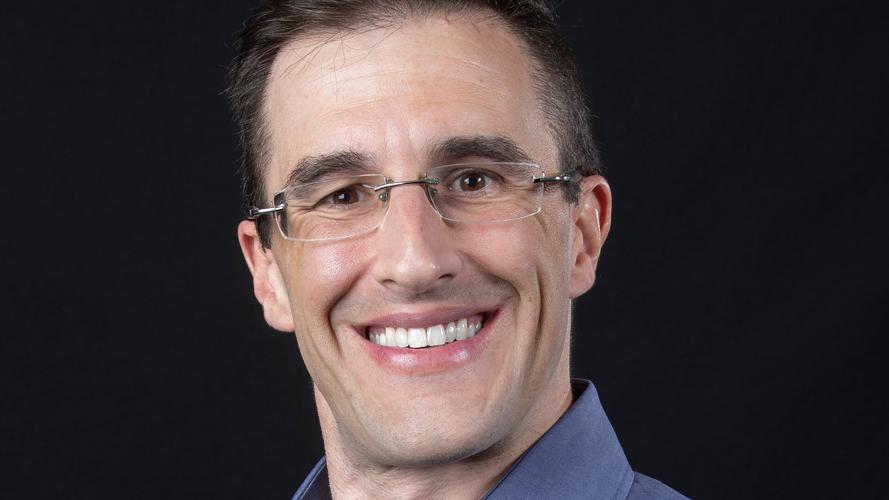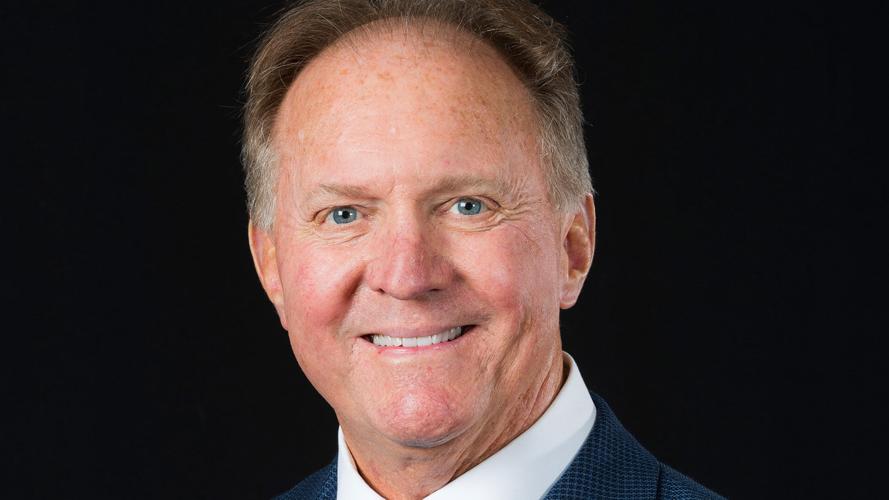Pima County supervisors want Arizona’s water agency to expedite a study of the Tucson area’s groundwater supply to see if it’s large enough to support all subdivision development expected over the next 100 years.
The Board of Supervisors voted 3-1 Tuesday to send a letter making that request of the Arizona Department of Water Resources, as requested by Democratic Supervisor Matt Heinz. Republican Supervisor Steve Christy was opposed; Democratic Supervisor Sharon Bronson wasn’t present for the vote.
Although the supervisors and County Administrator Jan Lesher said they didn’t know it, the state water agency has begun such an evaluation, but it’s not clear if the work can be expedited. The computer model analysis by the state won’t be finished until 2024 and may need 18 months, ADWR spokesman Doug MacEachern told the Star.

Matt Heinz
“We know the Colorado River is in a crisis at this point. We are living in a desert,” Heinz told the board.
Heinz noted that in early June, ADWR released results of a computer model-based study that projected a 4.86 million acre-foot gap between groundwater supply and demand will occur in the Phoenix area over the next century. Because of those findings, ADWR announced it will stop issuing new certificates of assured, 100-year water supplies for subdivision developments that rely solely on groundwater in the state-run Phoenix Active Management Area and aren’t served by water providers with their own designations of assured supply.
“I think it’s important we figure out what the situation is here in the Tucson Basin and we do so as soon as possible,” Heinz said.
Tucson area’s water resources ‘under control’
This appears to be a solution looking for a problem, Christy countered.
“Everything I’ve been led to believe is that water resources are under control as far as Tucson AMA is concerned,” said Christy, referring to the state-run water management area that covers most of the Tucson metro area. “I don’t want the Arizona DWR expediting any plans regarding a groundwater model. We have the capacity to figure that out on our own.”

Steve Christy
Board Vice-chairman Rex Scott said, “I’ll go ahead and vote for it, just because I think it’s good to have that information.”
“I would certainly hope that if they come to any kind of conclusions similar to one in Maricopa County, that they share the information with the public in the same prudent and nuanced way that they shared that information with that (earlier) report,” said Scott, a Democrat.
He noted that Democratic Gov. Katie Hobbs pointed out when the Phoenix-area report was released that the state’s order banning new subdivisions in certain areas wouldn’t cause development “to come to a grinding halt.”
That was in part because most Phoenix-area cities have ongoing designations of assured, 100-year water supplies that cover all new development within the boundaries of their utilities’ water service areas until the designations expire.
The ban on new subdivisions affects two cities that lack such designations, Queen Creek and Buckeye, along with other areas, including some lying within some city boundaries, that are served by private water companies that don’t have such designations.
The Tucson area’s water picture has generally been considered by most experts to be brighter than Phoenix’s. Because the city of Tucson now relies almost exclusively on renewable Colorado River water instead of groundwater for drinking supplies, water tables have been rising in parts of the city.
The Tucson Active Management Area has been on the edge of reaching the state’s goal of balancing groundwater pumping and recharge by 2025. That condition is known as “safe yield.”
Phoenix isn’t expected to make that goal. Plus, the recent ADWR study indicates the Phoenix area’s ongoing overdraft of groundwater, while it has decreased markedly since 2000, is likely to increase dramatically between now and 2121 as development continues.
Actions needed not just in Phoenix, state says
But in a slide presentation at a public meeting late last month, ADWR warned that the Tucson area may not always be in such good shape. The slide noted that updated groundwater modeling for the Phoenix and Pinal County water management areas “demonstrate that, over the next 100 years, these two AMAs have reached the anticipated limits of growth on groundwater supplies.
“Without action, this limitation will eventually be reached in the other AMAs, as well,” said the slide, referring to three other state-run Active Management Areas covering the Tucson and Prescott areas and Santa Cruz County south of Tucson.
One unknown factor for the Tucson area is whether major cuts in Central Arizona Project deliveries will occur here due to ongoing drying of the Colorado River — a condition that could force more pumping of groundwater. A separate problem is that many unincorporated areas of Pima County north, south and southeast of Tucson remain reliant on groundwater to serve rapid growth occurring there.
That’s raised concerns among some water experts that those aquifers could ultimately be prone to ground-sinking known as subsidence, along with diminished water quality.
But the bar will be high for the state to determine that such areas won’t have an assured, 100-year water supply. ADWR’s groundwater modeling will have to show that pumping would cause their water tables to fall by at least 1,000 feet over 100 years.
In a June 28 memo, Heinz noted that Tucson this year is voluntarily leaving 50,000 acre-feet of its total annual supply of water from the Central Arizona Project in Lake Mead in an effort to maintain reservoir levels. Democratic Mayor Regina Romero has said the city has agreed to leave a total of 110,000 acre-feet of CAP water in the lake over the next three years, in return for compensation of about $44 million from the federal government.
“In the near future, our region will rely increasingly on groundwater, putting stress on our AMA’s ability to balance groundwater levels and use,” Heinz wrote. “Given this inevitability, we urgently need a clear understanding of the demands of our groundwater system and how much growth our aquifers can safely support in the coming 100 years.”
Future battery plant’s water use criticized
In a July 9 letter to the Board of Supervisors, resident Kathy Madsen put a different spin on Tucson’s actions to leave some of its river water in Lake Mead. She noted that Tucson Water Director John Kmiec has said in announcing such actions that the city can afford to leave some water in the lake because it’s not using all the CAP water it receives and has been “banking” the surplus underground.
“If Tucson’s mayor and our water director feel confident, why is the BoS (Board of Supervisors) suspicious? What exactly is going on?” Madsen wrote. “As long as the pumps and parts for maintaining our existing underground water wells are stocked and the wells monitored — the job of our local water departments, not the board — why this sudden concern from the board?”
Two other letter writers essentially accused the board of being inconsistent, by expressing concern about water now after voting in December to approve a lease-purchase agreement that will enable an out-of-state company to build a battery manufacturing plant that will use large amounts of water.
A Utah-based lithium battery startup, American Battery Factory, plans to invest more than $1 billion to build a “gigafactory” complex south of Tucson International Airport, projected to eventually employ 1,000 workers, under the lease-purchase agreement with Pima County. County supervisors approved the agreement on Dec. 6.
The company, a spinoff of energy-storage systems maker Lion Energy, plans to produce lithium-iron-phosphate battery cells for home and commercial energy-storage systems. The factory will use about 150,000 gallons of water daily, Lesher, the county administrator, told the board in a memo before its vote.
American Battery Factory will lease up to 267 acres of land at the county’s Aerospace Research Campus, south of Raytheon and the airport, at fair market value as determined by an appraisal.
The company will have the option of buying the land as soon as 30 months after the lease is finalized, at a price of about $21 million for all 267 acres, provided it makes lease payments on time and meets initial construction and employment milestones, Lesher told the board.
One of the residents who wrote to the board, Terra Radliff, asked, “Are you planning on implementing water restrictions and fees on your constituents in the near future? Will you implement it due to our current ‘climate emergency?’ You created this situation by not responsibly managing the use of county water supplies. How will you responsibly correct it?”
Heinz says we can balance jobs, water use
Asked about those comments, Heinz responded: “We need to know for our own information how things are going. We live in the desert Southwest. Water is a huge issue, a limited resource. Judicious use of that resource is important. It doesn’t mean we can’t have economic development and new jobs, although we can’t be another chipmaking center like Silicon Valley.
“That doesn’t mean we can’t have balance. We can definitely have some industries. In the state of Arizona, pretty close to two-thirds of our water all goes to agriculture. What sense does that make?"
As for the battery factory, Heinz said, "I was pretty impressed with the thoughtfulness at which the developers bringing this plant here thought about water use. They won’t use excessive amounts.”
Longtime Arizona Daily Star reporter Tony Davis talks about the Colorado River system being "on the edge of collapse" and what it could mean for Arizona.







